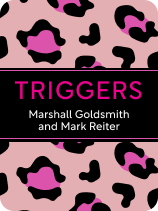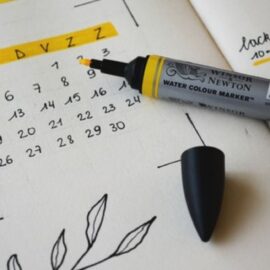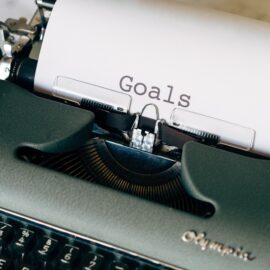

This article is an excerpt from the Shortform book guide to "Triggers" by Marshall Goldsmith and Mark Reiter. Shortform has the world's best summaries and analyses of books you should be reading.
Like this article? Sign up for a free trial here.
Why is it so difficult to change your behavior? Why do we tend to fall back into our old patterns despite our best efforts to change for the better?
We have a hard time changing our behavior. This is because we encounter “triggers” that make us revert to our old patterns. In their book Triggers, Marshall Goldsmith and Mark Reiter argue that you can reclaim control over your behavior and offer some strategies to prevent triggers from throwing you off course.
Keep reading to learn how to change your behavior by identifying and taking control of your triggers.
Changing Your Behavior
In Triggers, authors Marshall Goldsmith and Mark Reiter explain how to change your behavior by getting ahead of your triggers, either when you’re planning ahead and anticipating what your day might throw at you or when you’re recalibrating after a difficult day and trying to refocus on what matters most to you.
Ask for Help
The writers suggest that you ask the people around you to share their observations about the behavior you’re trying to change. You might not know why you’re acting in a way that’s inconsistent with your goals or values in a specific situation. And you might struggle to identify the trigger, like when you end up in a bad mood after a family dinner without realizing that your brother’s remarks about politics make you feel irritable.
Your family, friends, or colleagues can likely point out your triggers. Then, you can come up with a plan to change your reaction. Feedback from other people can also help you see how strongly the environment influences your behavior, which can motivate you to change.
(Shortform note: Goldsmith has long preached accountability as a powerful tool for changing your behavior. In a 2002 interview, Goldsmith said that his clients learn more from their friends, family, and colleagues than they learn from him. He believes that anybody in your life can help you change your behavior because they can offer you specific, concrete suggestions. This squares with Gretchen Rubin’s advice on accountability in Better Than Before, where she writes that you’re much more likely to change your behavior if you have others to check in with about your progress on specific goals.)
Decide What to Keep and What to Change
Another way to get ahead of your triggers is to think about what you want to keep and what you want to change. Even in an area where you have room for improvement, you probably don’t need to change everything you’re doing. Instead, as you identify what you’re doing well and what you’d like to do better, you’ll find that you’ll want to build positive new behaviors (and continue existing ones) while stopping behaviors that don’t serve you. The writers note that that may even include realizing that some things are beyond your control and can’t be changed.
For example, if you want to connect with your partner, you could change your habit of going straight to the TV after dinner by sharing a cup of coffee instead. On the other hand, you could keep your habit of checking in with short texts throughout the day.
(Shortform note: Committing to changing in the future feels easier than making a change right now. That’s because the future feels more abstract. Psychologists explain that the farther away something feels—temporally, spatially, socially, or hypothetically—the more abstractly we think about it. This theory, called construal level theory, suggests that when we think about changing our behavior in the future, we don’t think about the practical inconveniences. So we’re more willing to commit to changing our behavior in the future than to changing it right now.)
Test Yourself Every Day
Once you know what’s important to you and what you want to change, you can ask yourself a set of “daily questions” to track your progress. Goldsmith and Reiter explain that when you know you’re going to test yourself, you’ll feel more motivated to make productive choices during the day. In this way, the daily questions can help you stay engaged with the changes you want to make.
These are the steps involved:
1. Ask yourself, “Did I do my best?” about each important area of your life.
Each evening, measure your efforts toward your goals by asking whether you did your best to meet them. (This wording helps you reflect on effort, not performance.) Each question you ask yourself should assess a goal that’s important to you—a goal that, when you work toward achieving it, will help you become the person you want to be. For example, if you want to be a more engaged parent, you might ask yourself, “Did I do my best to give my child one-on-one attention today?”
2. Score your effort on a scale of 1 to 10.
Score your effort toward each goal on a scale from 1 to 10. Think about the actions you did or didn’t take. A score of 1 indicates minimal effort, while a score of 10 indicates maximum effort. You don’t necessarily have to have succeeded to earn a 10. You just need to have made a substantial and honest effort to work toward your goal.
You can even ask someone you trust to help you with this process. The writers recommend reporting your scores to someone else each day. Having someone to hold you accountable can give you more structure to push yourself to change.
3. Track your progress over time.
Track your answers to the daily questions over time. The daily questions have their utility in the moment. But if you collect your scores, patterns will likely emerge. For example, if you look at your data and see 9s and 10s for one goal but 1s and 2s for another, you can assess whether the latter goal really matters to you. If it does, you can change something to make a more substantial effort toward achieving it.
Think Ahead
To put yourself in the best position to resist your triggers before they happen, you can recognize ahead of time when a situation might trigger you. Goldsmith and Reiter clarify that when you know a particular environment is likely to influence you, you can choose not to engage with it. If you must spend time in that environment, you can alter your behavior to avoid reacting to the trigger.
For example, you might predict that a long conversation with a coworker who disagrees with everything you say might wear your patience thin. You might skip that conversation by taking an alternate route through the office. Or, you might change your behavior by not taking the bait.
(Shortform note: Though it makes sense to prepare for your triggers, experts recommend against starting your day by focusing on the stressful events to come. A study found that anticipating a stressful event reduces your working memory’s capacity. By fixating on a stressful event, you feel its impacts before it even happens—and whether or not it happens.)
In the Moment
Finally, let’s outline some strategies you can use as triggers arise to resist temptation, keep your behavior in check, and stay on track toward your most important goals.
Cultivate Awareness
Focus on cultivating awareness and practicing engagement. These are two tools that the authors assert will help you to notice the triggers in your environment and become more capable of responding to them in positive and productive ways. Think of a trigger as a catalyst: Normally, the catalyst sets off a chemical reaction. But you can add that moment of awareness as an inhibitor to stop the reaction.
We tend to think of many of our reactions as automatic, but they aren’t. If you train yourself to become aware of the impulse, then you can interrupt the progression from experiencing a trigger to reacting to that trigger. And when you engage, then you can choose how to act.
Remember to React Positively
You can’t become the person you want to be without learning to react in positive ways to unexpected triggers. It might help you just to remember this focus on positivity. Or, you can use structure to limit your options and attenuate your focus, which leads to better decisions that align with your long-term goals.
For those inclined to use a mantra, Goldsmith and Reiter recommend asking yourself: “Am I willing, at this time, to make the investment required to make a positive difference on this topic?” They shorten it to the acronym “AIWATT.”
Whether or not you use the acronym, you can focus on responding in positive and productive ways. Remind yourself of what you need to do in the present moment and consider whether the action you want to take would make the best use of your time, energy, and resources.
Compensate for Flagging Self-Discipline
When you know that a situation will test your ability to resist your triggers, you can add even more structure to keep your behavior in line. The writers recommend adapting the salient “daily questions” to check in with yourself more frequently during a challenging situation, as often as every hour. By continually restating your goal (and holding yourself accountable), you create a structure that helps you to practice self-discipline.
Questioning yourself each hour of a demanding workday or a weekend with your in-laws can help you stay aware of your behavior. So even if you don’t score perfect 10s, you’ve still gained the advantage of awareness.

———End of Preview———
Like what you just read? Read the rest of the world's best book summary and analysis of Marshall Goldsmith and Mark Reiter's "Triggers" at Shortform.
Here's what you'll find in our full Triggers summary:
- What triggers are and how to recognize them
- Why triggers are so effective at affecting your behavior
- Tools and strategies for resisting and avoiding your triggers






